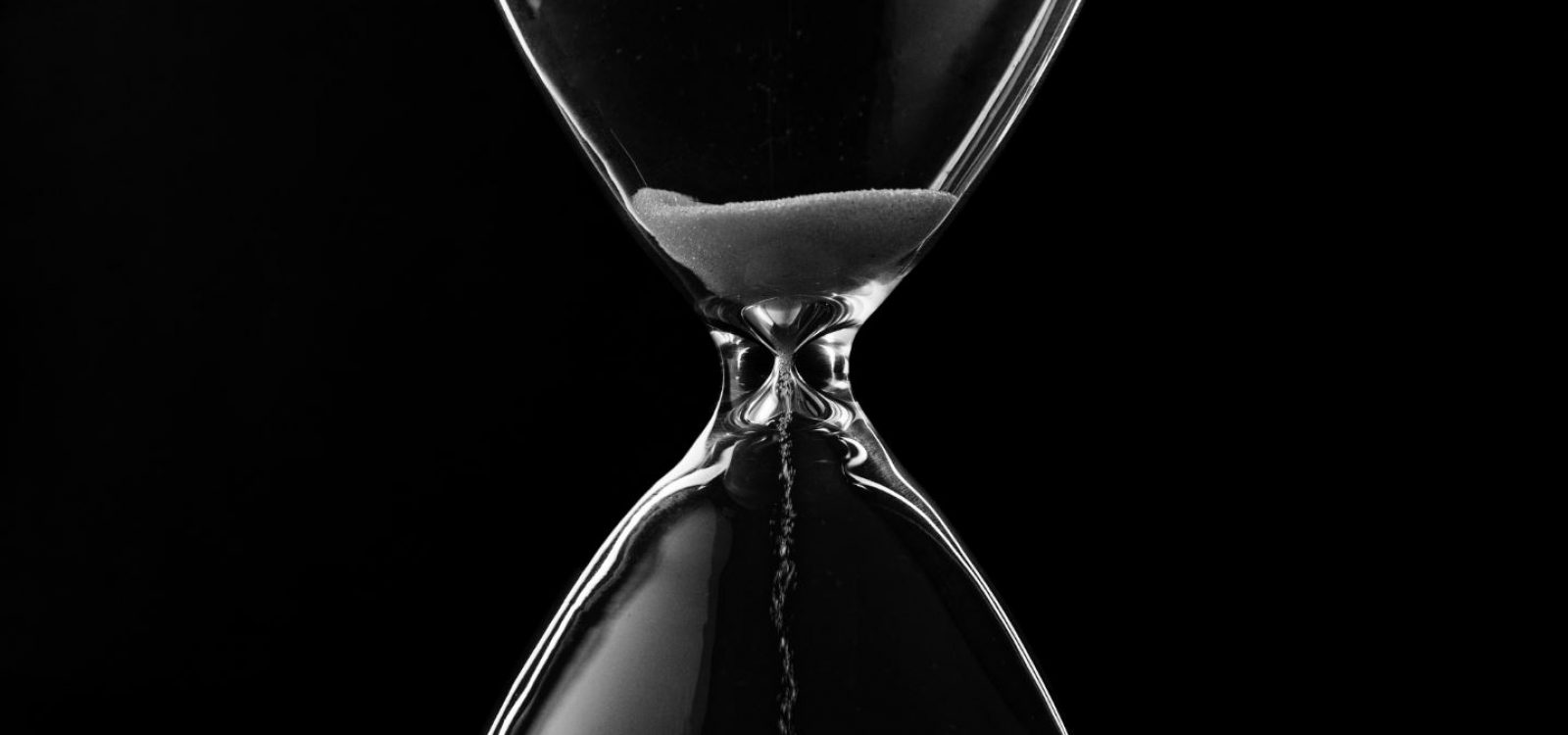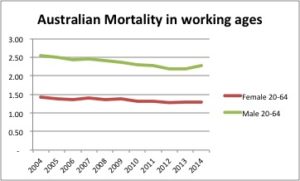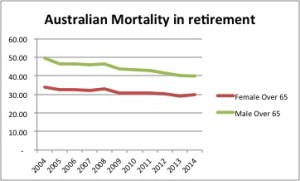
Is mortality improving? Who for?
Actuary Jennifer Lang investigates the latest knowledge on mortality rates in Australia in light of recent coverage in the United States.
Late last year, there was a flurry of mainstream interest in mortality statistics – here is the New York Times reporting on a study by two economists (Ann Case and Angus Deaton). The paper documents a marked increase in the all-cause mortality of middle-aged white non-Hispanic men and women in the United States between 1999 and 2013. This change reversed decades of progress in mortality and was unique to the United States; no other rich country saw a similar turnaround.
There has been a lot of speculation as to the cause – for example, Paul Krugman here:
Basically, white Americans are, in increasing numbers, killing themselves, directly or indirectly. Suicide is way up, and so are deaths from drug poisoning and the chronic liver disease that excessive drinking can cause. We’ve seen this kind of thing in other times and places – for example, in the plunging life expectancy that afflicted Russia after the fall of Communism. But it’s a shock to see it, even in an attenuated form, in America.
Source: ABS
Following the interest, I thought I should have a look at some Australian statistics. The age-standardised death rate for Australia has been falling for the last forty years. The reduction has dropped off more recently, though. In fact, the most recent statistics available (for 2014) show a slight increase in mortality rates for the population as a whole (in 2014 itself after standardising for age structure).
Looking at the experience more closely, Australian mortality has improved the most at older and younger ages. In working ages, mortality has reduced over the last 10 years – by around 1% per year. But in retirement, and for the under 20s, mortality has improved by much more (2% and 3% per year respectively).
Source: ABS
We don’t have mortality rates by race in Australia (except for indigenous Australians). The standardised death rate for all Australians has dropped by 1.7% over the 10 years. For Aboriginal Australians, it has dropped by only 0.7%. But the other main groups that we distinguish between are men and women; male mortality rates for the population as a whole have improved by 2.0% per year, while for women, they have improved only by 1.3%.
So in Australia, if there is a part of the population which hasn’t shared in the general improvement in health, sadly, it is the indigenous population. I’ve written about indigenous life expectancy before (as well as other gaps). Even as the overall Australian population gets healthier, the indigenous population is falling further behind. While I would love to get indignant about the fact that women’s mortality hasn’t improved as much as men in the last 10 years, Australian women have very little to complain about – with close to the highest life expectancy in the world. Save your indignation for the indigenous community, particularly today, on Australia Day.
This post originally appeared on Actuarial Eye on 26 January 2016.
CPD: Actuaries Institute Members can claim two CPD points for every hour of reading articles on Actuaries Digital.








